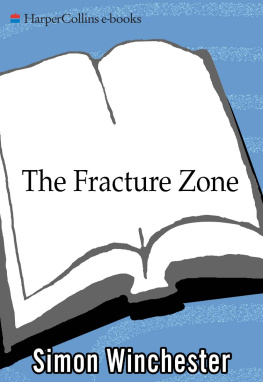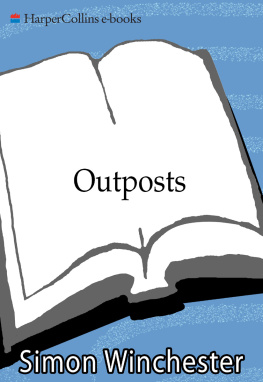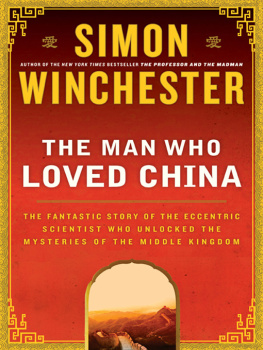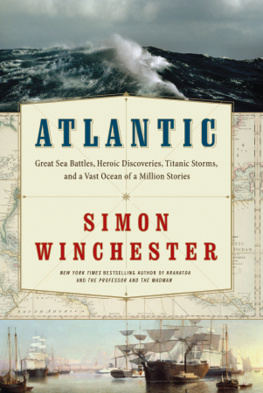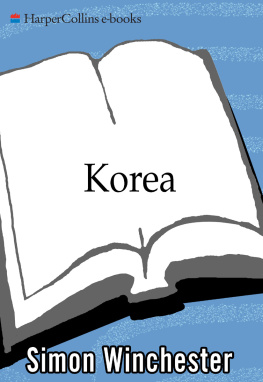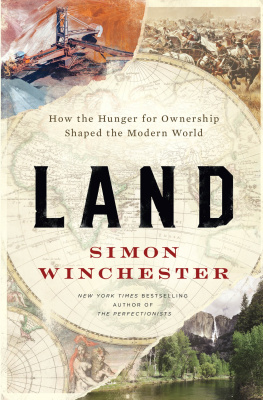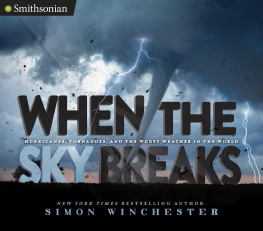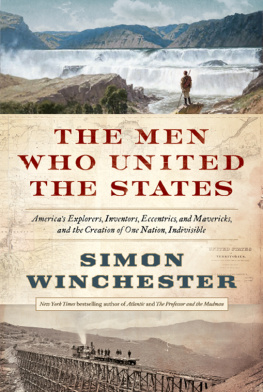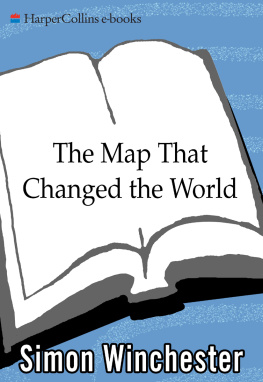Simon Winchester - The Fracture Zone: A Return to the Balkans
Here you can read online Simon Winchester - The Fracture Zone: A Return to the Balkans full text of the book (entire story) in english for free. Download pdf and epub, get meaning, cover and reviews about this ebook. year: 2009, publisher: HarperCollins Publishers, genre: Art. Description of the work, (preface) as well as reviews are available. Best literature library LitArk.com created for fans of good reading and offers a wide selection of genres:
Romance novel
Science fiction
Adventure
Detective
Science
History
Home and family
Prose
Art
Politics
Computer
Non-fiction
Religion
Business
Children
Humor
Choose a favorite category and find really read worthwhile books. Enjoy immersion in the world of imagination, feel the emotions of the characters or learn something new for yourself, make an fascinating discovery.
- Book:The Fracture Zone: A Return to the Balkans
- Author:
- Publisher:HarperCollins Publishers
- Genre:
- Year:2009
- Rating:5 / 5
- Favourites:Add to favourites
- Your mark:
- 100
- 1
- 2
- 3
- 4
- 5
The Fracture Zone: A Return to the Balkans : summary, description and annotation
We offer to read an annotation, description, summary or preface (depends on what the author of the book "The Fracture Zone: A Return to the Balkans " wrote himself). If you haven't found the necessary information about the book — write in the comments, we will try to find it.
The Fracture Zone: A Return to the Balkans — read online for free the complete book (whole text) full work
Below is the text of the book, divided by pages. System saving the place of the last page read, allows you to conveniently read the book "The Fracture Zone: A Return to the Balkans " online for free, without having to search again every time where you left off. Put a bookmark, and you can go to the page where you finished reading at any time.
Font size:
Interval:
Bookmark:
A Return to the Balkans

In memory of my friend,
Albert Meisel
The Sarajevo Sigmoid, designated on the map as the Kuci Over-thrust, is a conspicuous belt of Mesozoic flysch. It consists of thin Permian and Triassic clastics and neritic carbonates; next, of an uncomformable sequence of limestones that range from the Upper Jurassic to the Turonian, and of transgressive Durmitor flysch of the Senonian, whose fold fabric is characteristically intricate. Going northwest, the composition of this belt becomes increasingly complex. The Vardar Zone is the most complicated belt of the Balkan Peninsula. It is composed of several blocks of diverse composition, geological history, and provenance, and includes characteristic oceanic elements.
M. D. Dimitrijevic,
The Geology of Serbia and Adjoining Territories,
Republic Institute for Geological Investigations,
Belgrade, 1996
But the really reckless were fetched
By an older colder voice, the oceanic whisper:
I am the solitude that asks and promises nothing;
That is how I shall set you free. There is no love;
There are only the various envies, all of them sad.
W. H. Auden, In Praise of Limestone, 1948
Encounters at a Water Meadow
A Meeting with a Turkish Gentleman
To the Land of the Osmanlees
Looking for a Sarajevo Rose
The Fortress by the Sea
Western Approaches
The Lifting of the Gate
The Sound and the Fury
A City So Sublime
T HE BEWILDERING VARIETY of unfamiliar names that appear in any writing relating to the Balkans seems dramatically to inhibit any average readers sympathetic understanding of the story. I have tried to help overcome this in three waysby including as few personal names as possible; by omitting the confusing diacritical marks in the spelling of most of such names as I felt bound to include; and by appending a fairly full glossary of many of the termsof people, places, concepts, and thingsthat have helped make the Balkans such a complicated and often confusing place. I must apply the conventional offer to admit responsibility for any errors or misjudgments to this glossary, just as I do to the main body of the story. It is difficult to keep strictly objective any Balkan word listsince it includes, as do most Balkan stories, many monstrous people and their deedsand I hope I will be forgiven for not having tried to do so.
S INCE THE B ALKAN P ENINSULA has for centuries been a place of mystery, paradox, and wild confusion, it may not be too out of place to recall that this narrative properly opensin the late summer of 1977at a place that did not then exist, next door to a country that had at the time not been created, and among a people who, though sentient human beings in every accepted sense, had in another then not even been born.
In particular it started beside a water meadow of singular lovelinessall cypresses and lime trees, small olive groves, and cool and lush green grassesthat lies on the left bank of a prettily rushing little stream known as the Lepenec River. The river, which ultimately flows into the Aegean Sea by way of a gulf between the sacred mountains Olympus and Athos, rises in the snows of a small north-south line of hills known as the Sar Range, which themselves are a mosaic part of that formidable swath of geological wreckagethat has helped foster all the long confusion of the Balkansthe high Dinaric Alps.
This one cool alpine meadow, which first caught my eye on a sweltering afternoon in mid-August, lies at the southern end of a deeply incised and, in theory, highly strategic mountain pass, a gateway through the karst massifs of the Sar Range that is referred to by soldiers to this day (in memory of some long-forgotten hero) as the Kacanik Defile. Military maps published until very recently show that the defile and the water meadow at its lower end lie well inside the sprawling southern European entity that was known after 1929 as Yugoslavia. Since when I first went there it lay within the countrys frontiers, it enjoyed no practical strategic role at all: it was merely a dramatic canyon, a place known only for occasional banditry and for the sighting of bears, wild birds, and at least six varieties of venomous snake.
This is no longer the case. The Lepenec water meadow and the Kacanik Defile into and from which it leads, have lately come to play a crucial and terribly symbolic part in the awful human drama that has once again engulfed the wild and refractory peoples of the Balkans. What makes it especially remarkable, in a strictly personal sense, is what I discovered when I found myself at the meadow during the first of two crucial moments during 1999: that I had been there once before, and when it was in a very different state, in more ways than one.
Twenty-two years earlier I had been en route from Oxford, in my somewhat battered old Volvo, to take up a new job in India. It had seemed to me at the time that, rather than fly to Delhi, it might be more agreeable to drive there. A look at a good map swiftly shows that the Kacanik Defile is far from being on any obvious direct route between Oxford and New Delhi: The fact that on the journey to India I eventually arrived at this particular Balkan meadow was entirely due to the liverish mood of an American friend of mine, an archivist from Washington, D.C., who had telephoned on the eve of my departure to ask if I could possibly give him a ride to Tehran.
Albert Meisel, who has since died, was to become an unwitting agent in this story because of a remark he made as we drove down a motorway in southern England. Up to that point all had been going flawlessly: As soon as I agreed to take him along he had flown across the Atlantic, made a perfectly scheduled rendezvous with usI was traveling with my then wife and twelve-year-old sonoutside the Guardian office in London at noon on the appointed day, and we had taken off promptly to catch the three oclock Calais packet-boat. However, about an hour out of London, as we were speeding southeastward along the M2 in Kent, Albert suddenly glimpsed the towers of Canterbury Cathedral going past in a blur on the left, and asked, in what I thought an unnecessarily querulous tone, why we werent stopping to have a look?
I replied, with what was probably some asperity, to the effect that I was in no mood for tourism, that I was in a hurry, and that I wanted to catch the ferry and make Mons that nightfor the simple reason that I planned to make India well before the middle of September. I knew that the roads in the Punjab would be tricky with postmonsoon mud; I planned to be at the Khyber Pass in three weeks time. Albert grunted. This was not, he muttered, going to be the pleasure trip he had imagined.
It was much the same the next day in Germany, as we sped past the twin spires of Cologne Cathedral, and then again as a succession of ever prettier Bavarian villages vanished in the rearview mirror. Albert was sulking in the backseat, his mood becoming ever blacker. But I didnt care: I now had the bit between my teeth, and though the car was going well, the roads were said to be treacherous all through Afghanistan and there might well be delays. In my view there was simply no time for standing and staring, not in this early part of the trip.
But the next day, under the emollient persuasions of my wife, I backed down. I apologized for behaving like a tyrant and, once I had looked at the maps, offered a compromise: Instead of barreling down the main trunk highway from Vienna to Belgrade and then on to Sofiaalong a series of roads of insufferable tedium, jammed with long-distance trucks and littered with speed trapsI would go to Istanbul along the scenic route.
Font size:
Interval:
Bookmark:
Similar books «The Fracture Zone: A Return to the Balkans »
Look at similar books to The Fracture Zone: A Return to the Balkans . We have selected literature similar in name and meaning in the hope of providing readers with more options to find new, interesting, not yet read works.
Discussion, reviews of the book The Fracture Zone: A Return to the Balkans and just readers' own opinions. Leave your comments, write what you think about the work, its meaning or the main characters. Specify what exactly you liked and what you didn't like, and why you think so.

